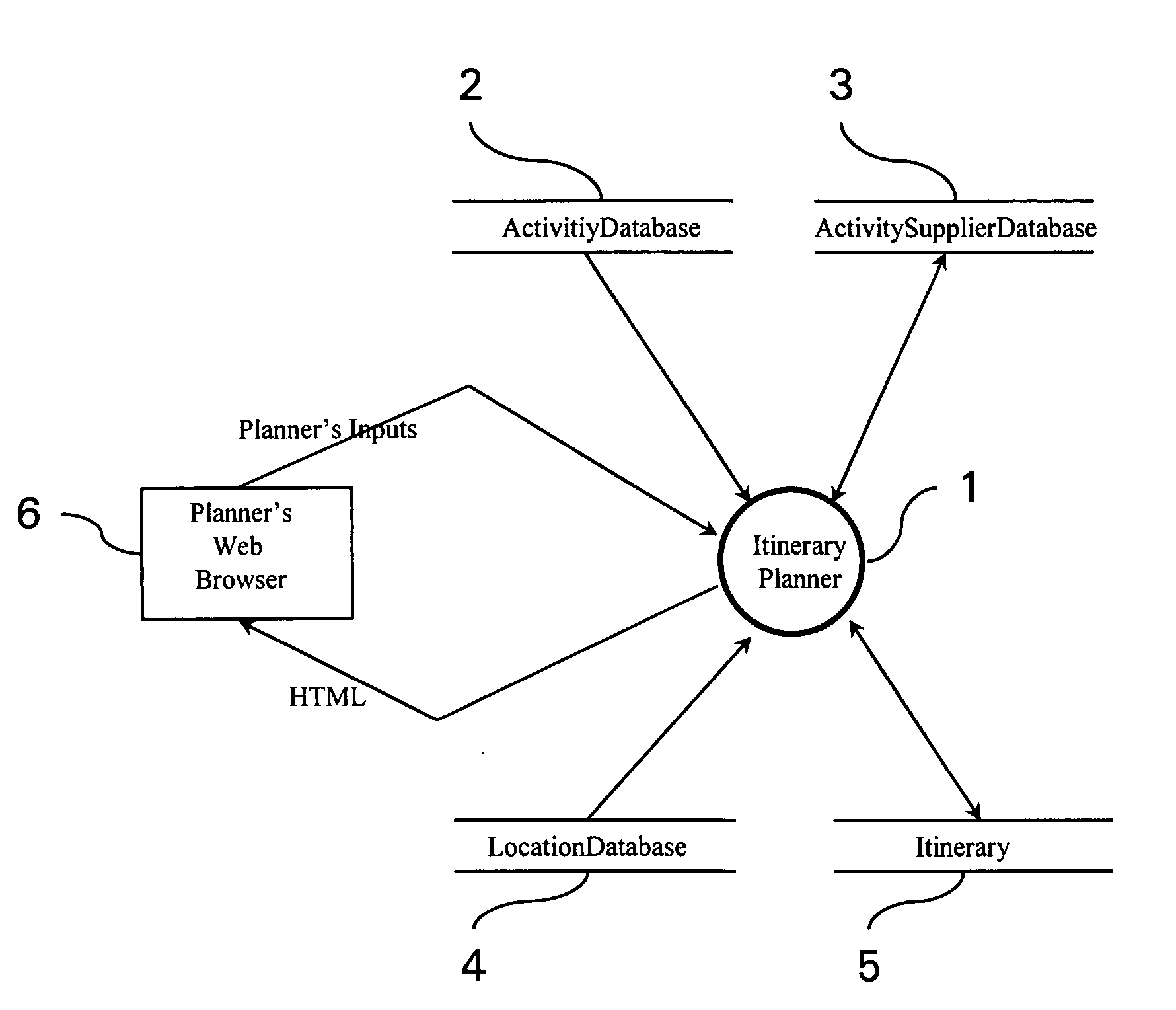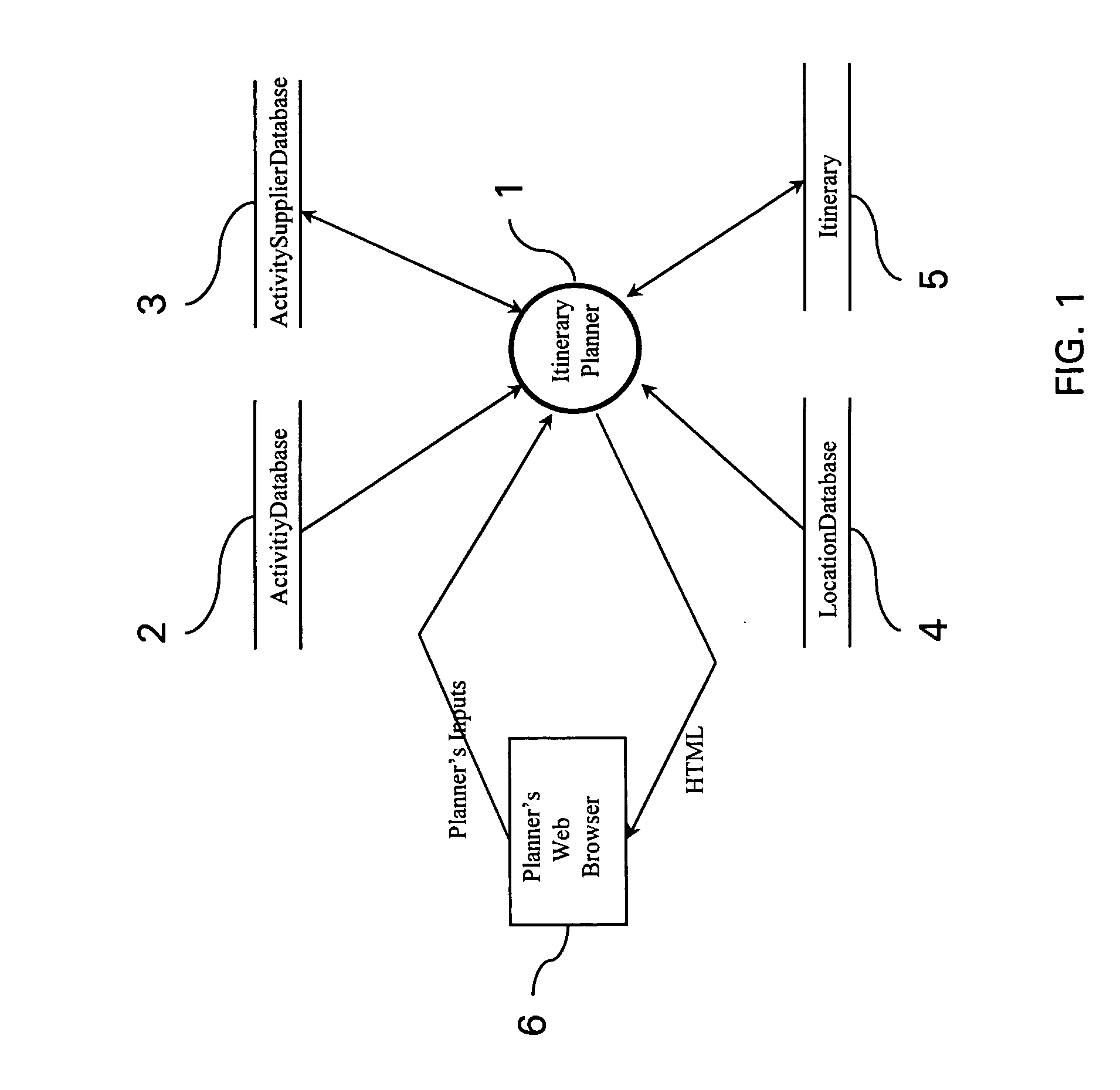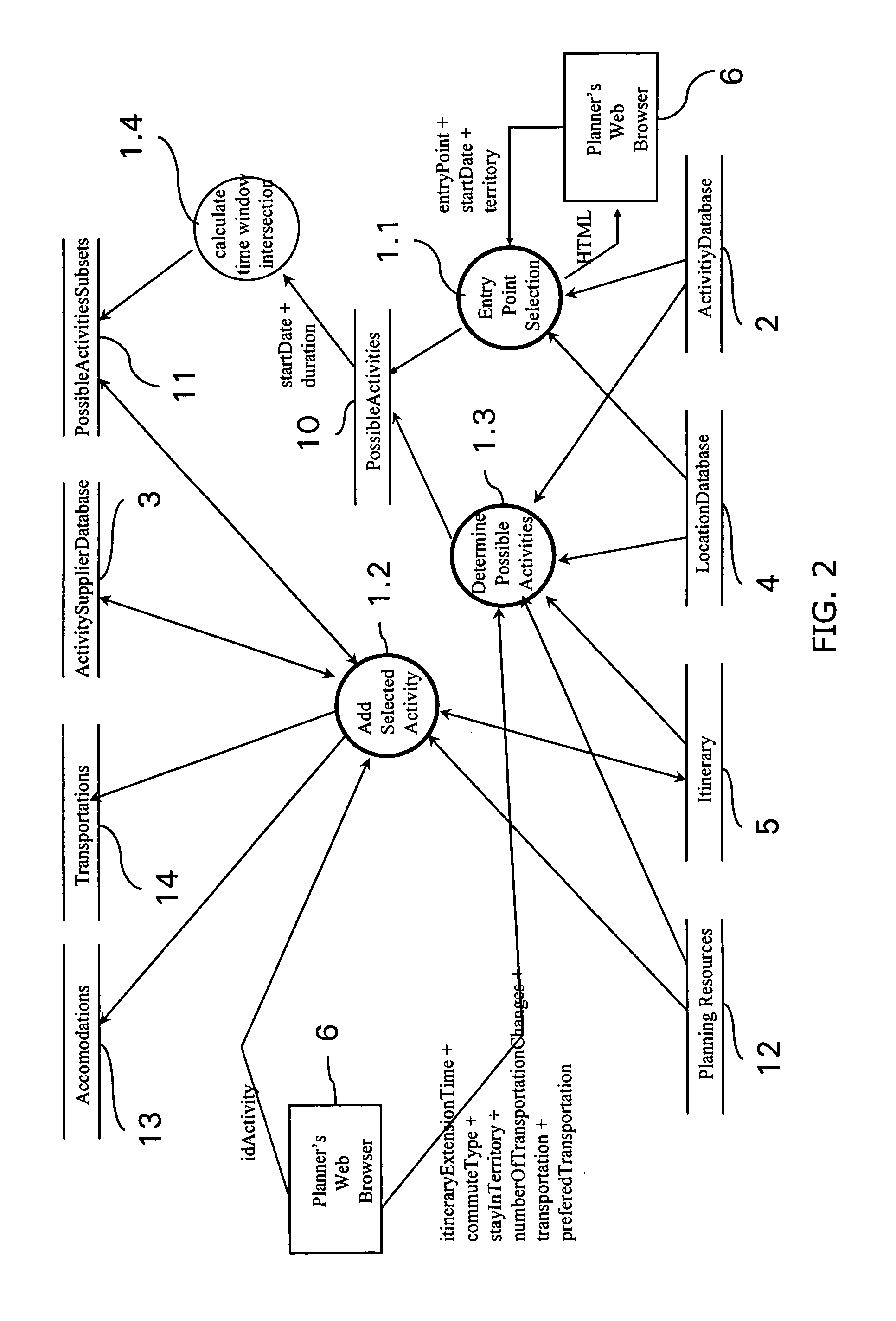Itinerary planning tool, system, and method
a technology for planning and itineraries, applied in the field of planning itineraries using software, can solve the problems of time-consuming and error-prone process, unwieldy process, and building an “itinerary” using conventional travel planning products
- Summary
- Abstract
- Description
- Claims
- Application Information
AI Technical Summary
Benefits of technology
Problems solved by technology
Method used
Image
Examples
Embodiment Construction
[0054]FIG. 1 is a schematic diagram of an itinerary planning tool and system constructed in accordance with a preferred embodiment of the invention. The itinerary planning tool 1 is preferably offered over the Internet and resides in one or more servers to which a “planner” or end user of itinerary planning tool 1 may be connected with the assistance of a web browser 6 that resides on the planner's computer, local area network server, or computing device such as a PDA or cellular telephone. The planning tool is further connected to various databases, which may be locally stored in the same facility as the planning tool, or distributed over a number of locations connected over the Internet or via other communications lines or networks. Those skilled in the art will appreciate that the hardware on which the planning tool of the preferred embodiment may be installed and in which the databases are stored is currently available and forms no part of the present invention, and that those s...
PUM
 Login to View More
Login to View More Abstract
Description
Claims
Application Information
 Login to View More
Login to View More - R&D
- Intellectual Property
- Life Sciences
- Materials
- Tech Scout
- Unparalleled Data Quality
- Higher Quality Content
- 60% Fewer Hallucinations
Browse by: Latest US Patents, China's latest patents, Technical Efficacy Thesaurus, Application Domain, Technology Topic, Popular Technical Reports.
© 2025 PatSnap. All rights reserved.Legal|Privacy policy|Modern Slavery Act Transparency Statement|Sitemap|About US| Contact US: help@patsnap.com



